Disclosure: This article contains affiliate links. We may earn a commission from purchases at no extra cost to you, which helps our travel content.
There's something about the Sonoran Desert that speaks to the scientist in me. The way ecosystems adapt to extreme conditions mirrors our own human resilience—something I've been studying professionally for years. But during my recent week in Mesa, Arizona, I wasn't collecting data or running experiments. I was testing my own limits, heart pounding against my ribcage as I navigated rugged terrain on a mountain bike, scaled desert rock faces, and paddled through rippling waters reflecting the amber glow of sunset. Mesa isn't just a living laboratory; it's an adventure playground waiting to be explored.
Conquering the Superstition Mountains: Hiking and Rock Climbing
The silhouette of the Superstition Mountains against the dawn sky is enough to make even a data-driven researcher like me pause in pure appreciation. These jagged formations aren't just geologically fascinating—they're an adventure seeker's paradise.
I started with the classic Siphon Draw Trail to Flatiron, a challenging 6-mile round trip with over 2,600 feet of elevation gain. The trail transitions from well-marked path to a scramble up slickrock that had me using both hands and feet. The scientific part of my brain noted how the vegetation changed with elevation, while the thrill-seeker in me was simply exhilarated by the climb.
For those seeking vertical challenges, Atlantis Canyon offers sport climbing routes ranging from 5.6 to 5.12. I spent a full day here with local guide Sarah from Desert Rock Adventures, who pointed out how the unique mineral composition of the rock creates those distinctive handholds that make the climbing so technical and rewarding. My climbing shoes earned their keep that day—the rubber gripped the volcanic rock perfectly, giving me confidence on the more exposed sections.
While climbing, I couldn't help but notice how the desert ecosystem has adapted to thrive in such harsh conditions—a perfect natural parallel to the research I've been conducting on environmental resilience back in Charlotte.
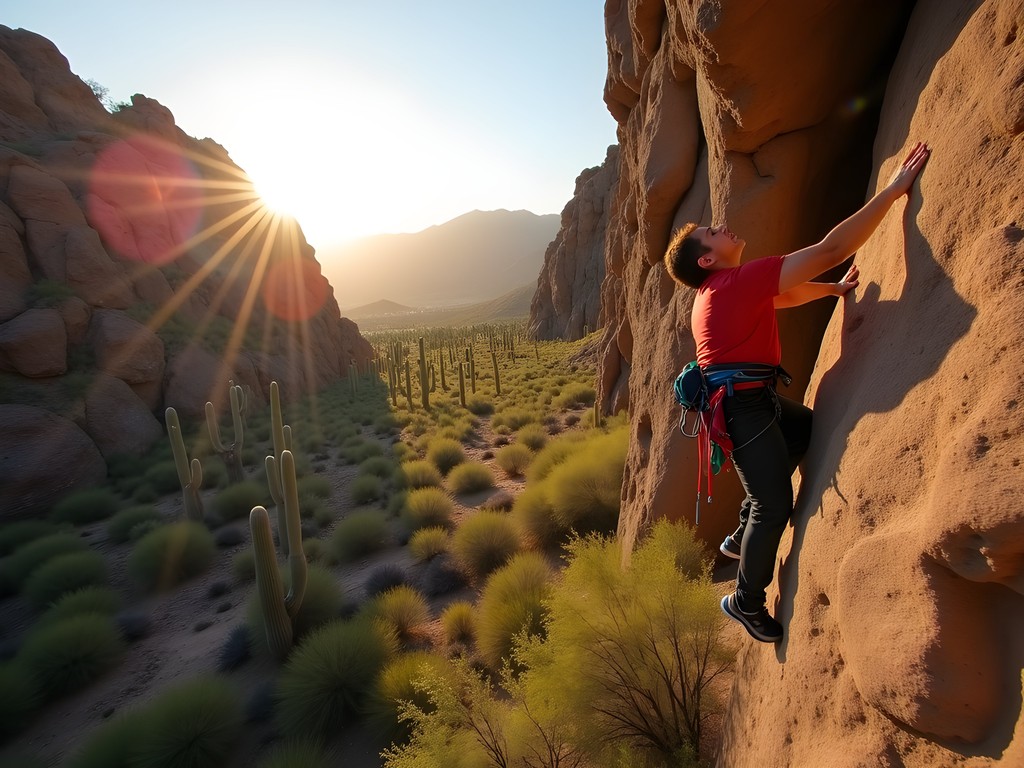
💡 Pro Tips
- Start hikes before 9 AM to avoid the worst of the heat, even in fall
- Bring at least 3 liters of water per person for a half-day hike
- Hire a local guide for your first climbing experience—they'll know which routes match your skill level
Shredding Desert Singletrack: Mountain Biking the Mesa Trail Network
As a researcher who spends most days in a lab, there's nothing quite like the sensory overload of bombing down a desert singletrack trail. Mesa's mountain biking scene has exploded in recent years, and the trail network at Hawes Trail System has quickly become my favorite testing ground.
The Hawes system offers over 20 miles of interconnected trails ranging from flowy beginner routes to technical rock gardens that had me white-knuckling my handlebars. Ridge Trail delivers stunning views of Four Peaks and the Salt River, while Mine Trail tests your technical skills with tight switchbacks and rocky descents.
I rented a full-suspension Specialized Stumpjumper from Arizona Outdoor Adventures, but serious riders might want to bring their own rigs. My hydration pack proved essential—I went through nearly all 3 liters during my 4-hour ride despite the moderate fall temperatures.
What makes Mesa's mountain biking unique is the ecosystem you're riding through. As someone who studies environmental impacts on health, I was fascinated by how the trail builders have minimized erosion while maximizing flow. The trails here are sustainable by design, allowing riders to experience the desert without damaging the delicate ecosystem.
Pro tip: Download the Trailforks app before you go. Cell service can be spotty, and having offline maps saved me when I took a wrong turn at the Mine Trail junction.
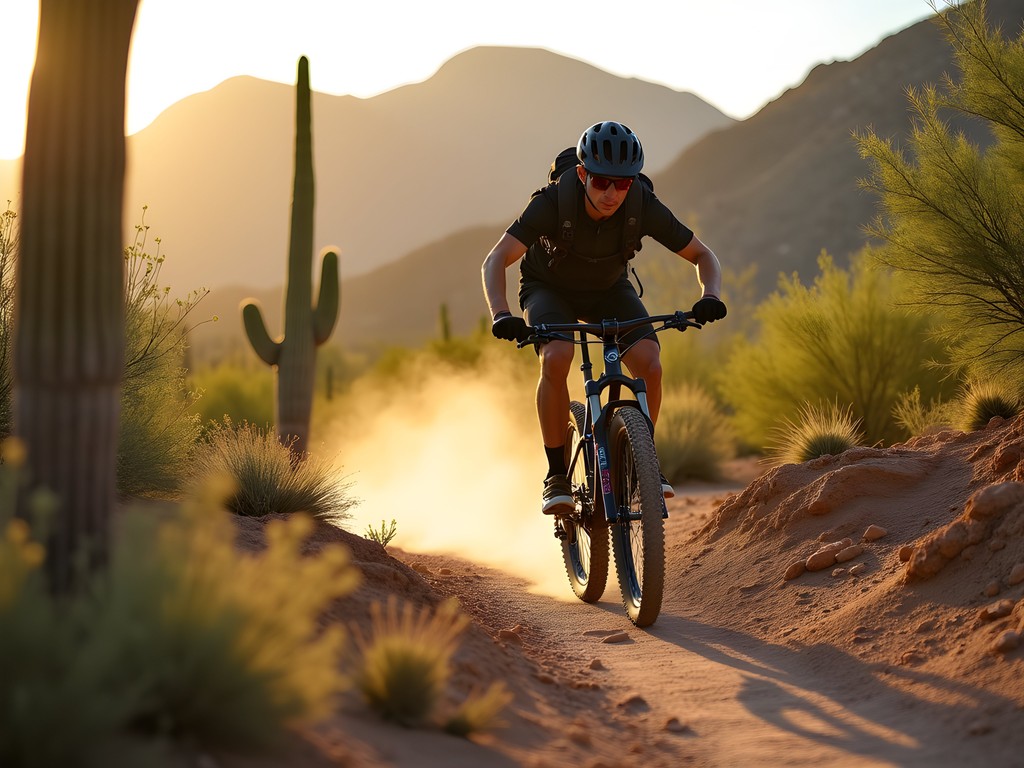
💡 Pro Tips
- Tubeless tires are a must—the desert is full of thorns that will puncture standard tubes
- Ride early morning or late afternoon for the best temperatures and lighting
- Bring more water than you think you'll need, plus electrolyte replacements
Water Adventures: Kayaking the Salt River
It might seem counterintuitive to find water adventures in the desert, but Mesa's proximity to the Salt River creates the perfect opportunity for paddling enthusiasts. As someone who studies ecosystem interactions, the riparian habitat along the Salt River is a fascinating transition zone between aquatic and desert environments.
I booked a guided sunset kayak tour with Desert Paddleboards, which provided all the necessary equipment and transportation. Launching from Water Users Recreation Site, we paddled a 4-mile stretch that offers both peaceful flat water and small rapids that add just enough excitement without requiring whitewater skills.
The dry bag I brought protected my research journal and camera perfectly—essential for documenting the surprising biodiversity along the river. We spotted great blue herons stalking the shallows, bald eagles perched on saguaros, and even a family of river otters playing near the banks.
The real magic happened as the sun began to set, casting the surrounding Tonto National Forest in a golden glow that photographers dream about. Our guide explained how the Salt River is a crucial water source in this arid region, supporting not just wildlife but the agricultural heritage of the area.
For those seeking more adrenaline, whitewater rafting is available in spring when snowmelt increases the flow rate. I've already added this to my list for a return trip—there's something about combining scientific observation with adventure that feeds both my professional curiosity and my need for outdoor experiences I can eventually share with my daughter.
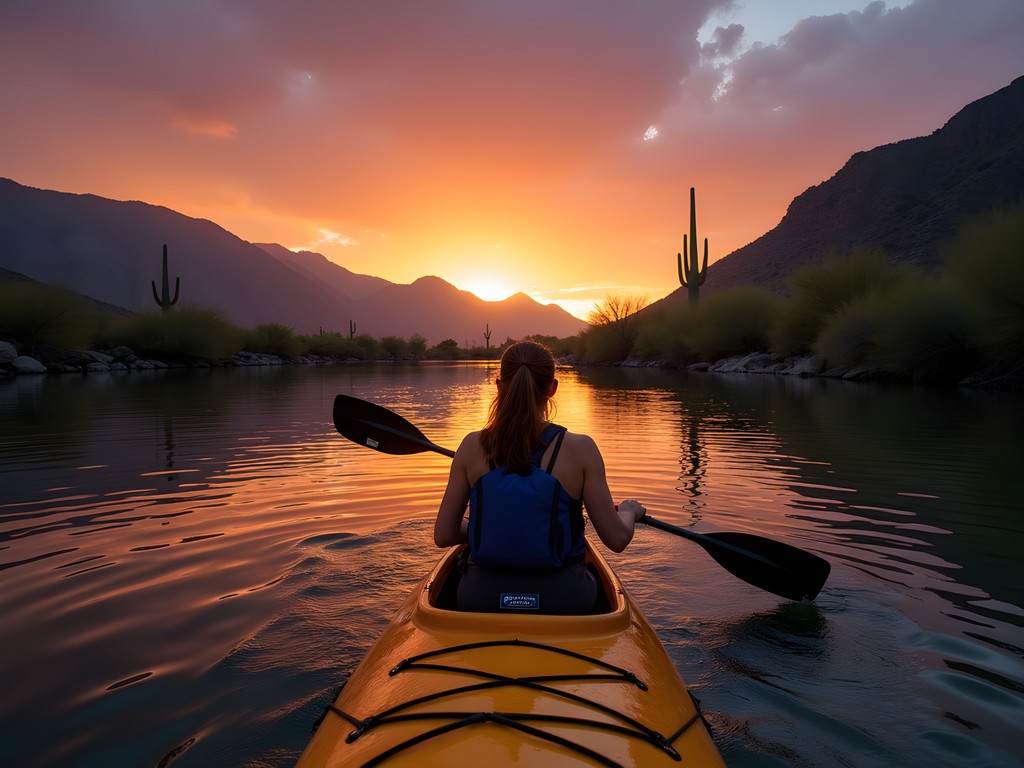
💡 Pro Tips
- Book kayak tours at least 3 days in advance during peak season (September-November)
- Wear quick-dry clothing and water shoes that can handle getting wet
- Bring polarized sunglasses to cut glare and better spot wildlife beneath the water's surface
Desert After Dark: Night Adventures and Stargazing
As a scientist, few experiences compare to observing the night sky from the desert—the reduced light pollution reveals astronomical features that remain hidden in our urban environments. Mesa's proximity to dark sky territory makes it perfect for nocturnal adventures.
I joined a guided night hike at Lost Dutchman State Park, where our group set out with headlamps equipped with red-light settings to preserve our night vision. Our guide pointed out nocturnal wildlife including kangaroo rats, desert scorpions (which fluoresce under UV light!), and several owl species. The ecological adaptations these creatures have developed to thrive in the harsh desert environment parallel many of the resilience mechanisms I study in my research.
For serious stargazing, I drove 30 minutes to the Lost Dutchman Observatory at Tonto National Monument. The star chart I brought helped me identify major constellations, but the volunteer astronomers with their high-powered telescopes revealed celestial details I'd never seen before—from the rings of Saturn to distant nebulae where new stars are forming.
For those seeking more adrenaline after sunset, several outfitters offer night mountain biking excursions on beginner-friendly trails. I opted for a sunset-to-stars ride with Wild Arizona Adventures, which combined moderate technical riding with stops for astrophotography. The juxtaposition of physical exertion and cosmic contemplation created one of those perspective-shifting experiences that remind me why I travel in the first place.

💡 Pro Tips
- Allow 20-30 minutes for your eyes to fully adjust to darkness for optimal stargazing
- Bring layers—desert temperatures can drop 30+ degrees after sunset
- Book astronomical viewings around the new moon for the darkest skies
Recovery and Refuel: Mesa's Adventure-Worthy Eats
Any scientist will tell you that proper recovery is as important as the activity itself, and Mesa's food scene delivers exactly what adventure-depleted bodies need. As someone who values both nutrition science and culinary exploration, I've mapped out my favorite refueling stations.
After my mountain biking excursion, I headed straight to Jalapeno Bucks, an unassuming BBQ joint housed in an old citrus stand. Their Arizona-style brisket with prickly pear BBQ sauce delivers the perfect protein-carb ratio for muscle recovery, plus it's a fascinating fusion of Southwestern and traditional BBQ flavors. The picnic tables under citrus trees create a perfect outdoor dining lab for analyzing the relationship between good food and post-adventure euphoria.
For breakfast before hiking, Worth Takeaway's avocado toast with an egg delivers complex carbs and proteins that sustain energy throughout the morning. I added their cold brew coffee concentrate to my insulated water bottle with ice—the caffeine boost helped sharpen my senses on technical terrain.
My scientific curiosity led me to True Food Kitchen at Dana Park, where the anti-inflammatory menu is based on actual nutritional research. Their Ancient Grains Bowl with wild-caught salmon provided the omega-3s and complete proteins my muscles needed after a full day of climbing.
For those seeking post-adventure libations, Arizona Wilderness Brewing Co. experiments with foraged local ingredients in their craft beers. Their Superstition Coffee Stout incorporates beans from local roaster Peixoto Coffee, creating a delicious example of Mesa's interconnected food ecosystem.
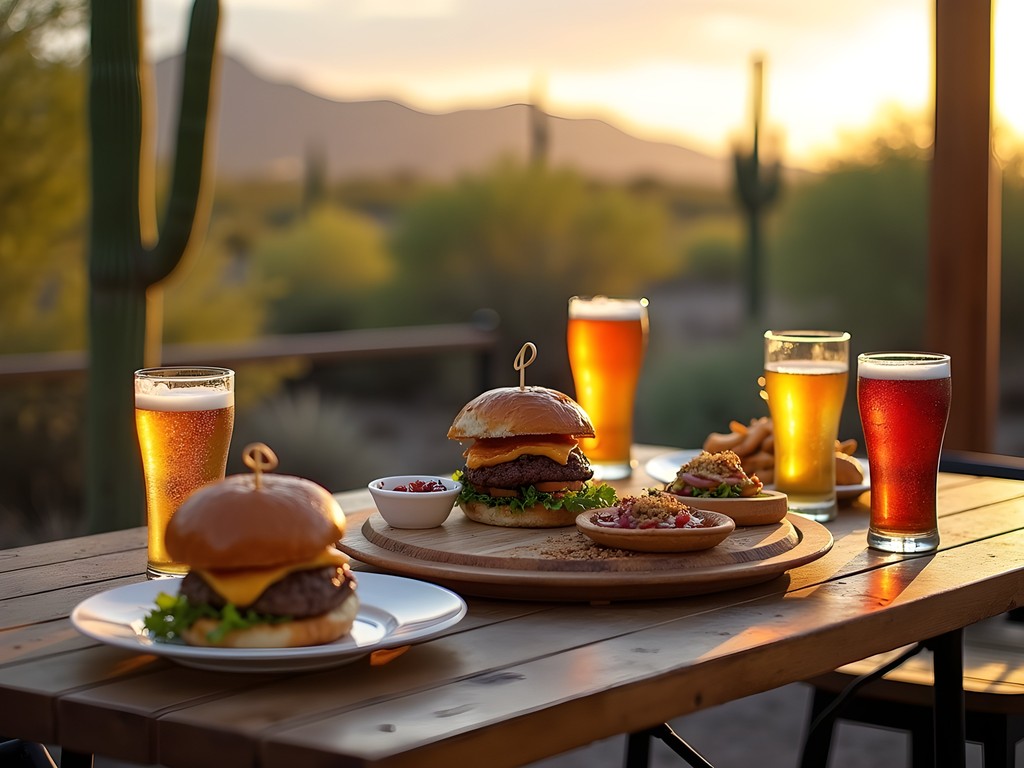
💡 Pro Tips
- Hydrate with electrolytes before hitting the craft beer scene—desert adventures deplete minerals quickly
- Most adventure spots are 30+ minutes from restaurants, so pack substantial snacks
- Many local restaurants source ingredients from Mesa's Fresh Foodie Trail—ask about seasonal specialties
Final Thoughts
Mesa exists at the intersection of scientific wonder and adventure opportunity—a combination that resonates deeply with me both professionally and personally. The Sonoran Desert's resilience mirrors the human capacity to adapt and thrive in challenging environments, something I've witnessed firsthand on the trails, cliffs, and waterways of this remarkable destination.
What makes Mesa truly special for solo adventurers is the accessibility of its natural playground. Within a 30-minute drive from downtown, you can be scaling volcanic rock faces, navigating technical singletrack, or paddling past nesting bald eagles. The fall season offers that perfect temperature sweet spot where desert exploration becomes not just possible but genuinely enjoyable.
As both a scientist and adventure enthusiast, I've found Mesa to be a destination that feeds both the mind and the spirit. Whether you're analyzing the ecological adaptations of desert flora while mountain biking or contemplating our cosmic insignificance under the desert's star-filled sky, Mesa offers experiences that transcend the typical adventure destination. I'll be back next year—perhaps with my daughter for her first desert adventure—because some laboratories are too beautiful not to revisit.
✨ Key Takeaways
- Fall offers the ideal temperature window for desert adventures in Mesa
- Combining water-based activities with land exploration provides a comprehensive desert experience
- Local guides enhance both the adventure and educational aspects of Mesa's outdoor offerings
- The ecological diversity of the Sonoran Desert creates unique adventure opportunities not found elsewhere
- Mesa's food scene perfectly complements its adventure offerings with recovery-focused nutrition
📋 Practical Information
Best Time to Visit
Mid-September through November
Budget Estimate
$1,000-1,500 for one week including accommodations, activities, and meals
Recommended Duration
5-7 days
Difficulty Level
Intermediate

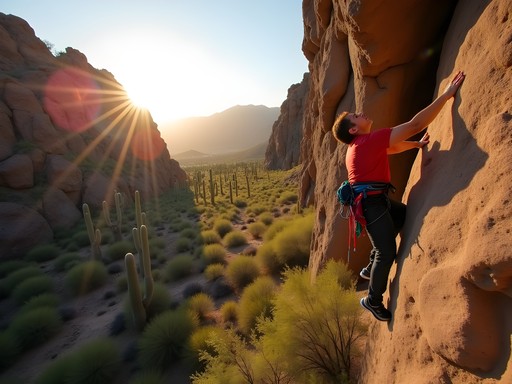
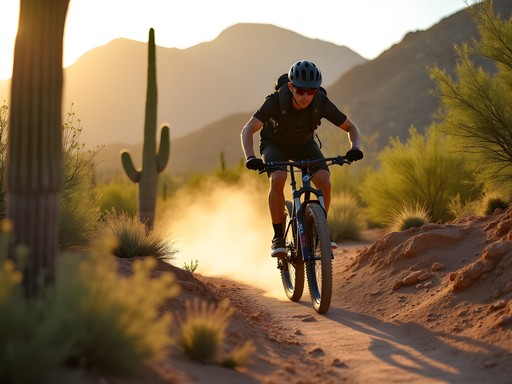
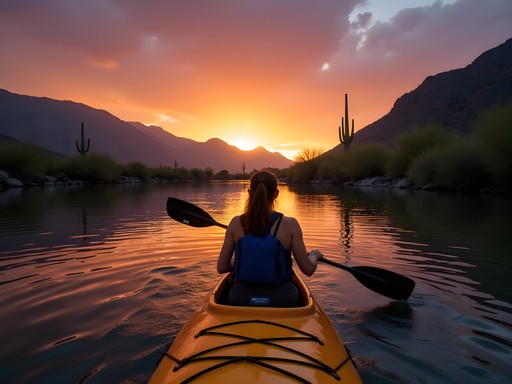




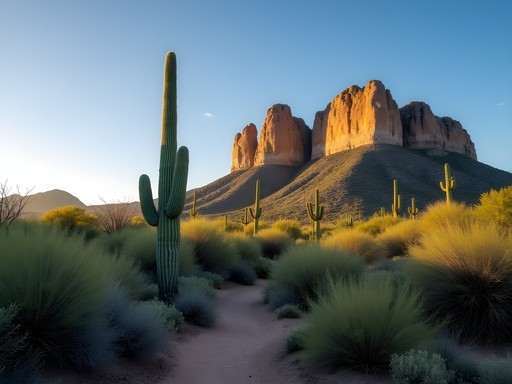
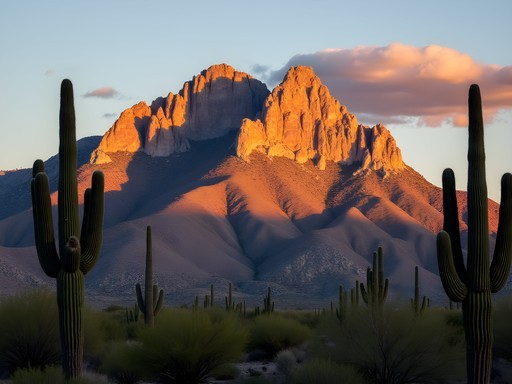

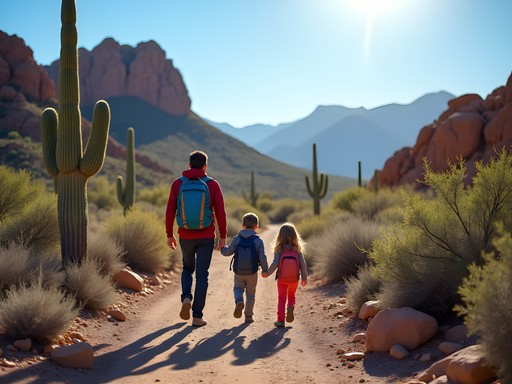




Comments
Bryce Diaz
Wesley, your post brought back so many memories! I spent a week in Mesa last fall and the night adventures were the highlight for me. The Lost Dutchman State Park stargazing event was mind-blowing - the Milky Way looked close enough to touch! For anyone planning a visit, try the guided night hikes at Usery Mountain Regional Park. Our guide pointed out scorpions with a UV light (they glow neon blue!) and we spotted several owls. Just make sure you bring a good headlamp - the trails get DARK once you're away from the parking areas. Mesa really is that perfect blend of science and adventure that you mentioned.
skyqueen
Glowing scorpions?! That sounds equally terrifying and awesome! Adding night hiking to my list now.
skyqueen
Those Superstition Mountain hikes look amazing! Has anyone done the Flatiron trail? Wondering how difficult it really is for someone who's fairly new to desert hiking.
Bryce Diaz
I tackled Flatiron last year - it's definitely challenging! Took me about 5 hours round trip and the last section is basically scrambling up rock faces. Bring WAY more water than you think you need. I went through 3 liters and wished I had more. The views are absolutely worth it though!
skyqueen
Thanks for the heads up! Maybe I should try some easier trails first to get acclimated to the desert heat.
Bryce Diaz
Smart move! Wave Cave or Hieroglyphic Trail are great starter hikes in the area. Just remember to start early - I learned the hard way that midday sun in the Sonoran is no joke!
freepro
Those Hawes Trail System photos are epic! Adding Mesa to my MTB bucket list.
globelife
Just got back from Mesa and can confirm the stargazing is INCREDIBLE. We drove out to Lost Dutchman State Park for one of their night programs and saw more stars than I've ever seen in my life. The rangers pointed out constellations and let us use their telescopes. Definitely add this to your itinerary if you're visiting!
Amanda Morris
Wesley, your scientific perspective on the desert ecosystem really adds depth to this guide! I visited Mesa last autumn and was captivated by how the cultural history intertwines with the natural landscape. After hiking in the Superstitions, I spent time at the Mesa Grande Cultural Park learning about the ancient Hohokam people who mastered desert living centuries ago. It gave me a whole new appreciation for the trails I'd just hiked. For anyone planning a trip, I'd suggest balancing the adrenaline activities with some cultural exploration - it enriches the whole experience of connecting with this remarkable landscape.
Wesley Lane
Thanks Amanda! Completely agree about the cultural dimension. The Hohokam canal systems were engineering marvels that we can still learn from today.
winterlife
Has anyone tried the night mountain biking trails mentioned in the post? Sounds terrifying but exciting!
freepro
Did it last year. Intense but worth it! Make sure you have serious lights.
winterlife
Thanks! Any trail recommendations for a first-timer?
freepro
Start with Desert Arroyo Loop. It's technical enough to be fun but not deadly if you mess up.
Sage Dixon
Wesley, you nailed the essence of Mesa's adventure scene! I spent a week there last year testing the limits of what the desert could throw at me. The Superstition Mountains have some of the most underrated climbing in the Southwest - those volcanic tuff formations create amazing problems. For anyone heading there, the bouldering at Hieroglyphic Canyon is particularly good for intermediate climbers. And don't miss the night hikes during full moon - it's like walking on another planet. The desert transforms completely after sunset, both visually and in terms of wildlife activity.
Wesley Lane
Thanks Sage! Couldn't agree more about the full moon hikes - it's like the desert reveals its secret side. Your climbing insights are spot on too.
Claire Hawkins
Just took my family to Mesa last month and followed your Superstition Mountains recommendations - what an experience! My kids (8 and 10) managed the Peralta Trail surprisingly well, though we turned back before reaching Fremont Saddle. The rock formations were absolutely stunning and the kids loved spotting desert wildlife. We used hiking poles for extra stability which really helped on the steeper sections. The night stargazing was definitely the highlight for everyone - we've never seen the Milky Way so clearly!
cooltime27
What's the best time of year for kayaking the Salt River? Planning a trip but worried about water levels!
Wesley Lane
Spring is your best bet (March-May) when snowmelt increases the flow. Summer can be hit or miss depending on rainfall. I'd avoid late summer/fall when levels can get pretty low.
cooltime27
Thanks Wesley! Looks like I'll plan for April then. Can't wait!
globebackpacker
Just booked my trip for November after reading this! Can't wait to try those mountain biking trails. Has anyone done the Hawes Trail Network specifically?
Sage Dixon
Hawes is fantastic! It has trails for all levels, but Ridge and Mine trails are my favorites for the technical challenges and views. The Saguaro section is great for beginners. Try to ride early morning - the light on the desert is magical then.
Venture X
Premium card with 2X miles, $300 travel credit, Priority Pass